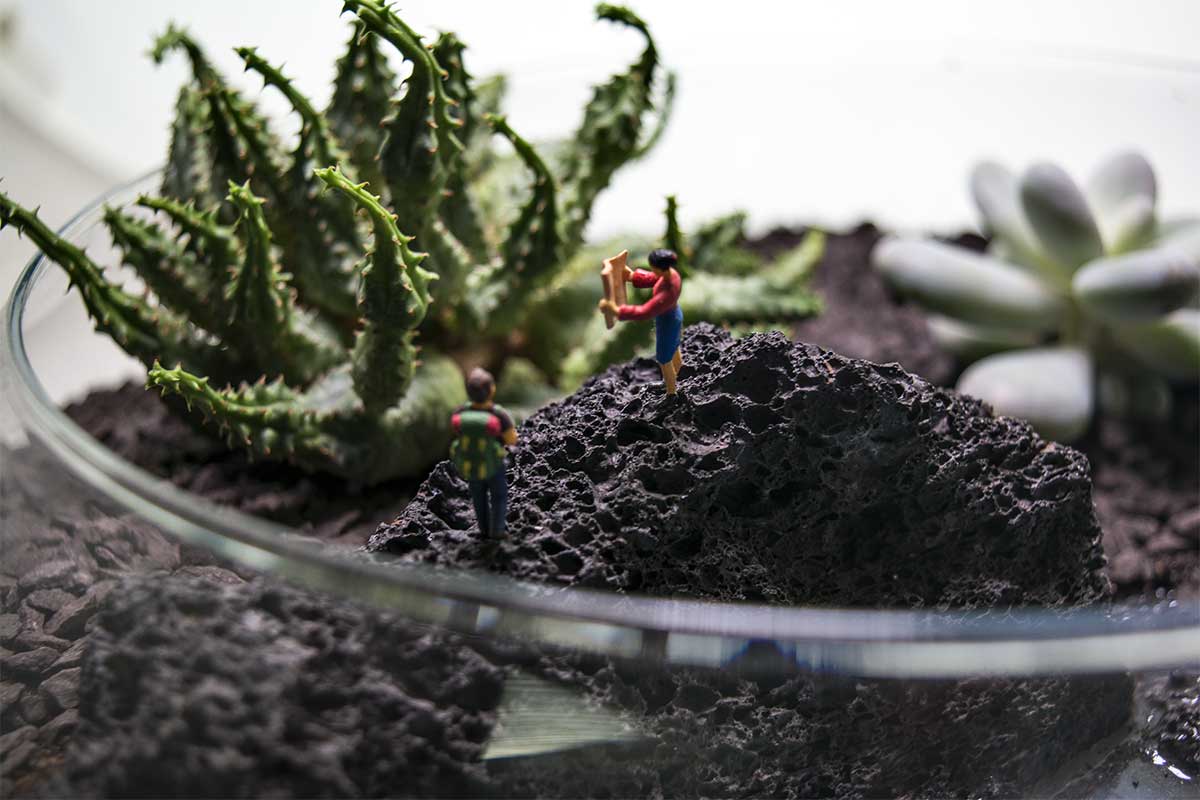
Terrariums: Easy to care for, perfect for small spaces, and simply stunning. These are just a few reasons why terrariums are ideal for decorating homes and offices.
The History of Terrariums
In 1842, botanist Nathaniel Bagshaw Ward published a book titled "On the Growth of Plants in Closely Glazed Cases," sharing the story of his remarkable discovery. Interested in studying insects, he placed a chrysalis inside a glass bottle, sealing it tightly with a makeshift lid. He positioned the bottle where it would get sunlight and observed moisture forming at the top during the day, which then dripped down to the soil at the bottom.
To his surprise, after a few days, a fern and small grass began sprouting inside the bottle—plants he had been struggling to grow in his garden. Ward suspected that pollution from local factories was affecting his garden’s health, leading him to believe plants could thrive when shielded from environmental pollutants.
He then removed the jar from the window, and the plants continued to flourish inside the sealed bottle for four years without any watering. This marked the birth of the terrarium.
Terrariums became a popular trend during the Victorian era in England, originally called “Wardian Cases.” Nathaniel Ward even commissioned carpenters to build these cases to transport British plants to Australia. Despite months of travel, the plants arrived healthy and growing.

What Are Terrariums?
Terrariums are miniature ecosystems, usually housed in transparent glass containers. There are two main types: open and closed terrariums. Closed terrariums have a lid that prevents air from entering or exiting, while open terrariums do not.

Choosing between open or closed terrariums depends on the types of plants inside, as the wrong choice can cause plants to wilt.
-
Closed Terrariums: Ideal for plants that thrive in high humidity, such as ferns, pileas, fittonias, periwinkles, carnivorous plants, and mosses. Moss terrariums are a popular variety of closed terrariums.
-
Open Terrariums: Best suited for plants requiring less water, like cacti and succulents. However, not all succulents are suitable for planting in jars, so plant selection is important.

Caring for Your Terrarium
Closed Terrariums require minimal care. Occasional misting is enough, as water recycles within the sealed glass environment. Success depends on choosing the right plants and placing the terrarium in a bright spot, but out of direct sunlight.
Open Terrariums have no lid, so plants need more frequent watering. Since these containers don’t have drainage holes, it’s important to add materials like decorative gravel at the base for proper drainage. Water plants lightly and according to their specific needs.
